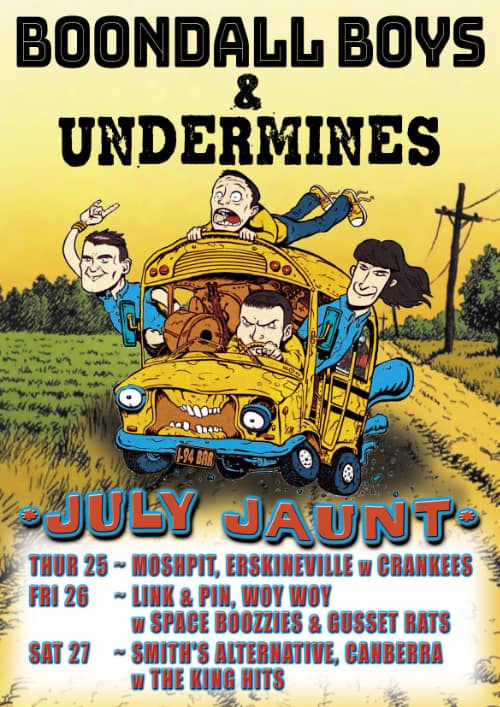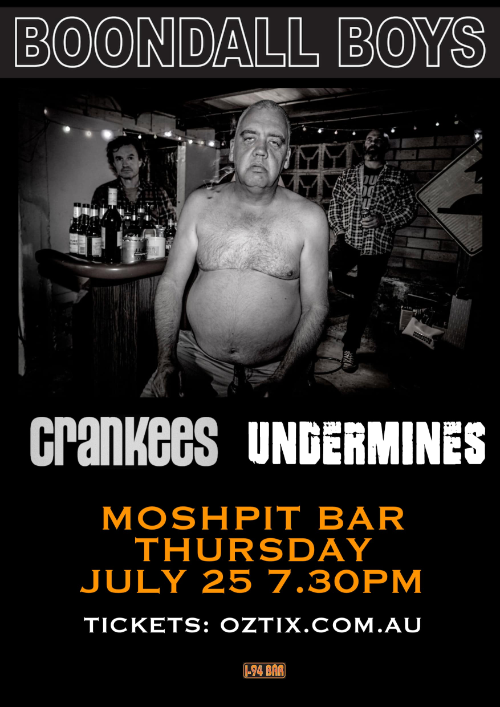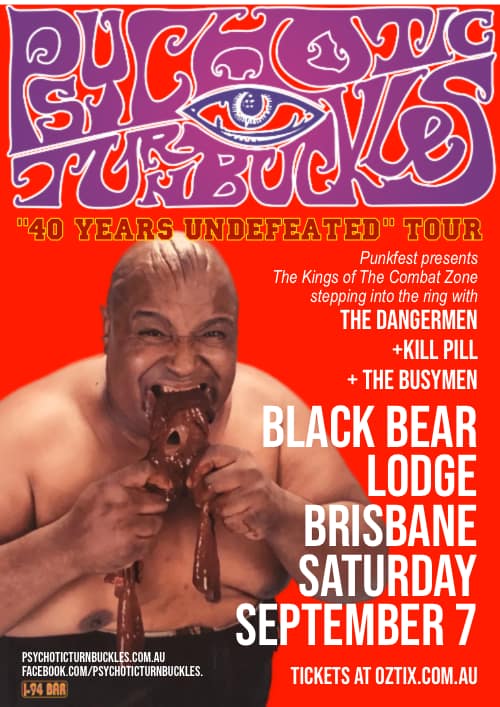PROLOGUE
Frederick Dewey Smith was born in West Virginia on September 13, 1949. As a child, he moved with his parents to Lincoln Park, Michigan, a downriver suburb of Detroit, part of the exodus of white and black workers from the rural south to the greater opportunities of the industrial Midwest.
The Smiths had a guitar around the house, and a neighborhood kid and aspiring guitarist named Wayne Kambes started coming around and showing Fred chords to songs. Fred learned fast and was soon playing in a band called the Vibratones. (Wayne played in another, rival band called the Bounty Hunters.) Fred had bought a Fender Duo-Sonic guitar, which he didn't like and subsequently returned to the store, but he liked the name and kept it for himself: Fred "Sonic" Smith.
Southern Michigan in the early sixties was primed for a rock 'n' roll explosion. Workers in Detroit's auto industry were making good paydays, which translated into plenty of disposable cash for a generation of factory workers' kids. Teen clubs, like Punch Andrews and Dave Leone's chain of Hideouts, were thriving. The influence of a vital R&B scene (of which Motown was only the most conspicuously successful element) put the emphasis on strong rhythm sections and PERFORMANCE. Dozens of records by area bands were released on a proliferation of small, independent labels, and actually made the local charts. Some were even picked up for distribution by national labels - as when New York producer Bob Crewe reinvented a whiteboy R&B band from the Motor City called Billy Lee & the Rivieras as Mitch Ryder & the Detroit Wheels, who went on to score big national hits like "Devil With a Blue Dress On" and "Sock It To Me, Baby."
The college town of Ann Arbor, 40 miles from Detroit, added an element of hip bohemianism and political consciousness that would be another important influence on the nascent Detroit rock community. In 1964, Fred and Wayne (now calling himself Wayne Kramer) started a new band, the MC5 (for Motor City Five) with a local beatnik/sci-fi/jazz and blues fan who'd been recently converted to rock by hearing the Rolling Stones: Rob Tyner (ne Derminer). Pat Burrows on bass and Bob Gaspar on drums completed the lineup. They played the usual gigs for a teenage band of the time...parties, weddings, school dances, teen clubs, a few scattered bar gigs.
The band took their cues from James Brown, whose performance they'd witnessed in the 1965 film The T.A.M.I. Show, and the harder R&B-based British Invasion bands like the Stones, the Kinks, Them, the Yardbirds, and the Who. Spurred by these inspirations, the young band began experimenting with higher volume and feedback. Their first original composition was a room-clearing free-form assault called "Black To Comm."
Eventually the original rhythm section, whose tastes and ambitions were more conventional than Smith, Kramer, and Tyner's, departed and were replaced by Wayne's neighbor Dennis "Machine Gun" Thompson (ne Tomich) on drums and a converted folkie-strumming Bob Dylan fan and ex-art student named Michael Davis on bass. Although Fred was still "just the rhythm guitarist," both rhythm team members recall he was already showing sparks of creativity.
DENNIS THOMPSON: Fred was the creative musical person in the band, the most musically driven. Like Brian Jones in the Rolling Stones, he would come up with the coolest guitar parts, and Wayne Kramer was more or less the icing on the cake.
MICHAEL DAVIS: When I first got in the MC5, Fred and I shared an apartment in downtown Detroit...We'd sit up all night and play the acoustics and Fred had this little tiny amplifier that he'd plug in; at that time he had a Gretsch Tennessean...I guess that's where I first really started to check out how original of a musician Fred was. These things he'd come up with...he'd play them over and over and over again and you'd never get tired of 'em. It was just like, "Let's hear it again," you know, and he's playin' whatever that part he was working on and he had this kind of mesmerizing, I would call it original style. He didn't ever sound like anybody else. It was always coming straight out of him.
Fred's individuality extended to his choice of instruments. For most of the Five's career, his two favorites were a Mosrite - signature guitar of the surf instrumental band the Ventures and definitely unhip in the era of Les Paul and Stratocaster-slinging British guitar heroes - and an Epiphone Crestwood Deluxe, one of only 200 manufactured. In the later days of the Five, he'd adopt a Rickenbacker 450, another extremely unfashionable model, but one that suited his particular needs.
One of the top bands on the Detroit scene was the Rationals, four Ann Arbor teenagers who'd been together since junior high school. Under the tutelage of Discount Records manager and A-Square Records impresario Hugh "Jeep" Holland, they'd evolved from Brit Invasion wannabes into blue-eyed soul brothers in the manner of their favorite band, Young Rascals. Their third single, a cover of Otis Redding's "Respect" (recorded a full year before Aretha Franklin's), was picked up by Cameo-Parkway and made it to the lower regions of the Billboard Hot 100. At the end of 1966, radio station WKNR named the Rationals "the most popular group in Detroit."
SCOTT MORGAN: When I first met Fred, he didn't say ANYTHING. He was real quiet, and I talked to Wayne. Wayne was the exact opposite. He said, "Oh, that's Fred. He's trying to grow his hair longer than Brian Jones!" That was my first memory of Fred.
In an effort to win over the budding hippie community, the Five pursued a relationship with John Sinclair, a poet, music critic, and leader of a community of artists and writers called the Artists Workshop that had coalesced around the Wayne State University campus. Finally, Sinclair agreed to serve as the band's manager. The Artists Workshop evolved into the Trans-Love Energies commune (and later, as they became more politicized, the White Panther Party). The Five moved in with the commune and they forged a symbiotic relationship: members of the commune designed stage costumes and concert posters for the band, while the receipts (such as they were) from the band's performances supported the commune.
Around the same time, a Dearborn high school teacher named Russ Gibb returned from a visit to the West Coast and opened Detroit's first "psychedelic" ballroom: the Grande. The Five became his house band, continuing to develop their stagecraft and gaining notoriety for blowing a number of touring acts off the stage (a common practice among Detroit bands). "Kick out the jams or get off the stand!" they'd taunt the out-of-towners; the phrase later became the title of the MC5's best-known song.
Even then, Fred was an iconoclast. Although he'd initially been taken by Eric Clapton's guitar work on the first Cream album, things had changed by the time the Five opened a Grande show for the Cream in early June 1968..
GARRY RASMUSSEN: They gave the Cream one dressing room, and on the other side of the stage was the other dressing room that the MC5 had. The Cream was taking solos, and they got to the point where Ginger Baker's playing his 10-minute, 15-minute drum solo, and Eric Clapton comes down into the dressing room, and Fred was pretty cool...he goes over to him and says, "Why don't you guys have a rhythm guitar player in your band?" "Well, we think that we can handle it without a rhythm guitar player." "Well, how come there's a rhythm guitar on your records, then?" Just giving him shit, basically. But that was the MC5, anyway. They kinda gave EVERYBODY a little bit of shit.
During a July gig at the Limber Loft in Leonard, Michigan, Sinclair was clubbed and maced by police following a dispute over money with the club's management. Hearing Sinclair's calls for help, Fred Smith rushed to his aid and was also arrested on charges of assaulting a police officer. The Five performed at the Yippie "Festival of Life" during the 1968 Democratic National Convention in Chicago. They were signed to Elektra Records (for an advance of $20,000) on September 22, 1968, after Elektra's "house hippie," Danny Fields, witnessed a performance at the Fifth Dimension in Ann Arbor. Signed at the same time (for $5,000) were the Five's "little brother band," the (formerly Psychedelic) Stooges, the band formed by erstwhile blues drummer Jim Osterberg, now known as Iggy Pop, with the Asheton brothers - former Chosen Few bassist Ron on guitar, and Scott on drums.
SCOTT MORGAN: I knew Scott real well 'cause we had gone to Forsythe Junior High School, Scott and [his brother] Ron and I all went to the same junior high, when they had just moved here from Iowa, and we were all around the same age, and my dad had grown up in Iowa, so we connected fairly fast. Plus they were musicians. RON ASHETON: [My brother] borrowed (Scott's brother) Johnny Morgan's drumkit, so he had played a little bit. He had a basic idea of what to do, and he just sorta came along and learned, like we all did. He would go and hang out with Dave [Alexander] and the Morgans to some of their band practices, and he picked up a little stuff. He asked those guys, "Show me this, show me that." He'd watch them and then he'd emulate...he did know like the paradiddles and flamadiddles, 'cause he took drum lessons for a long time, and he did play drums in the band at school. He played snare drum.. But he pretty much learned how to play on the kit by himself.
Slightly younger than the Five and the Stooges, the Up were a band fronted by Trans-Love member and former Grande master of ceremonies Frank Bach and featuring the Rasmussen brothers, Bob on guitar and Gary on bass.
GARY RASMUSSEN: We were pretty influenced by the MC5. We'd been going to a lot of shows and playing a lot of shows all along, like the Yardley had a big show in the state fairgrounds in Detroit, which was like the Yardbirds, the Blues Magoos, Mitch Ryder & the Detroit Wheels, the Velvet Underground...quite a show, actually, for back then. After the British Invasion came through, we were actually playing a lot of songs by the Kinks and Yardbirds and that kind of music. Then we saw the MC5 play and since we were kinda hangin' out with 'em, we probably started buying bigger amplifiers and turnin' it up.
Recorded at the Grande on "Zenta New Year" (October 30-31, 1968) and released in early 1969, the Five's debut LP on Elektra, "Kick Out the Jams", stirred controversy from the word go, due to the use of the word "motherfucker" in Rob Tyner's spoken intro to the title track. The band agreed to record a "clean" version (substituting the phrase "brothers and sisters" for the offending epithet) for release as a single, which Elektra substituted on the album without the band's consent, removing John Sinclair's liner notes at the same time.
The Five were dropped from Elektra just six months after their original signing when they took out an ad in a Detroit underground paper blasting Hudson's department store for not stocking the record and prominently displaying Elektra's logo. Atlantic Records quickly signed the Five (for an advance of $60,000) and assigned former Rolling Stone scribe Jon Landau to produce their second album.
With Sinclair on his way to jail on a drug charge, Landau supplanted him as the Five's mentor. With almost no experience as a producer, and loathing what he considered the sloppy excess of "Kick Out the Jams", Landau committed the band to a program of playing simple arrangements "correctly," rather than extemporizing on every take, and set about "cleaning up" their recorded sound. The resultant album, Back In the U.S.A., wasn't really representative of the band, although it DID show the growth of their songwriting, particularly Fred Smith's. Following "Back In the U.S.A"., leadership of the band seemed to shift from Wayne to Fred.
MICHAEL DAVIS: Fred wasn't really into leadership in a formal way. Fred was only into having Fred's way, so he when it came time to really step on the gas, Fred wasn't there. Fred was probably the most slow-moving individual that's ever graced the Earth. Fred wouldn't move until Fred decided to move. There could be a forest fire six inches from your ass and if Fred wasn't ready to leave, nobody left. You weren't leavin'. I don't think the band rejected Wayne's leadership. I think he just stepped back to let Fred do some leading. The third album was Fred's concept, that was "Frederico Smithelini..."
Although that third album, High Time, hardly sold at all in its time, today it's the album which most fans agree was the Five's best. It's also the one where Fred had the most creative input as songwriter and "conceptualist."
DENNIS THOMPSON: It was the first record that we produced ourselves. We had a producer who was a "stable" producer for Atlantic, Geoff Haslam...But Geoff would sort of work with us and not tell us what to do, and let us sit behind the board and play with the dials and the mix, and let the whole group sort of work at it together, and then when it came down to a mix-down, we all would defer to Fred...let Fred and Wayne and Geoff do the mix. And finally we came up with a product that should have been released as our first one, 'cause that's pretty much how we played when the band started.
"High Time" is the record where Fred finally comes into his own as a songwriter and guitarist. He wrote four of the album's eight songs and played dual leads with Wayne on several tracks, most notably Dennis Thompson's "Gotta Keep Movin'."
DENNIS THOMPSON: I wrote ["Gotta Keep Movin'"] 'cause Fred could play really well, but see, Wayne was the flash, he would do most of the solos, and Fred held down the rhythm chords. 'Cause Fred was incredible in terms of rhythm and having an original feel to rhythm guitar playing. But he could also play lead like a badass sonofabitch. So I just made up my mind, "I'm gonna write a venue for Fred to show off his 32nd-note dexterity." I got together with Fred after I got an idea for it -- "Hey Fred, we're gonna do a real fast fuckin' song, and I want you to play that 32nd-note thing that you got down so pretty" -- 'cause him and I used to be pretty good friends. And we worked on it and put it together and then when we started doing it live, Wayne said, "I'm not gonna let that fucker show me up." So that's exactly what I wanted, was a battle of the two guitar players, and it turned out pretty damn fine.
Having alienated most of their American audience, the Five shifted their focus to Europe (where they had first appeared in 1970) By June 1972, after several tours of the Continent, Rob (who'd had a wife and children since '67 and was now unwilling to leave them) and Dennis (who was in a methadone program) had had enough. Both refused to go on the road again when another tour was offered.
DENNIS THOMPSON: [Fred and Wayne] did a tour as the MC5, but not with me, not with Rob and not with Michael. Fred and Wayne went over as the "MC2" and hired all pickup musicians [bassist Derek Hughes and an unknown drummer] in Europe. And they fell flat on their fuckin' face. They did three or four dates and they were back.
WAYNE KRAMER: Some of those gigs were just the worst. You'd arrive at the venue and the place would be packed. The promoter would be there, and he'd have his family and his children and want to meet everybody, and everyone was all smiles to have the MC5 here from America. The dressing room would be full of fruit and meats and cheeses and flowers and whiskey and wine and beer. Then we'd go out and play and of course, we were just fuckin' awful. It was just me and Fred and a drummer we hadn't even rehearsed with. He had no idea who we were or what our music was like. Fred and I had never even sung those songs before. We didn't hardly know the lyrics to them, and we'd go out and try to sing these tunes and play these parts.. Then of course you'd go back in the dressing room after the show and the flowers and the whiskey and the wine and the cheese and the fruit are all gone, and the promoter's gone, and there's nobody there to pay us. The crowd left the minute you started playing because it was so fuckin' awful. Then you'd have to go do it again tomorrow night - drive 500 kilometers in the snow to go through it again tomorrow night.
The bitter end came back at the Grande, New Year's Eve 1972. The band was paid $500. Wayne was strung out and couldn't finish the gig.





